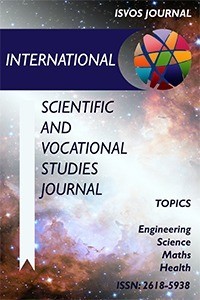Numerical Study on Free Particle Reinforced Fiber-Metal Composite Sandwiches Under Ballistic Loads
Ballistic behavior, fiber-metal plate, spherical particle, sandwich structure design
Numerical Study on Free Particle Reinforced Fiber-Metal Composite Sandwiches Under Ballistic Loads
___
- [1] H. N. Long, R. Shannon, J. C. Stephen, P. M. Adrian and C. O. Adrian, “The effect of target thickness on the ballistic performance of ultra high molecular weight polyethylene composite”, International Journal of Impact Engineering, vol. 75, p. 174-183, 2015.
- [2] C. Sipei, L. Jun, Z. Pan, L. Chunpeng and C. Yuansheng, “Dynamic response of sandwich panels with multi-layered aluminum foam/ UHMWPE laminate cores under air blast loading”, International Journal of Impact Engineering, vol. 138, p. 103475, 2020.
- [3] R. M. Jones, “Mechanics of composite materials”. London: Taylor & Francis, 1999.
- [4] K. Krishnan, S. Sockalingam, S. Bansal and S. D. Rajanb, “Numerical simulation of ceramic composite armor subjected to ballistic impact”, Composites Part B: Engineering, vol. 41, p. 583-593, 2010.
- [5] M. L. Wilkins, “Mechanics of penetration and perforation”, International Journal of Engineering Science, vol. 16, p. 793-807, 1978.
- [6] I. Crouch, “12 - the future of armour materials”, The Science of Armour Materials, Woodhead Publishing in Materials, Woodhead Publishing, p. 675–692, 2017.
- [7] T. Nieberle, S. R. Kumar, A. Patnaik and C. Goswami, “Review: Composite Materials for Armour Application”, in: Lecture Notes in Mechanical Engineering, Springer Singapore, p. 239–248, 2021.
- [8] T. Singh, A. Patnaik, B. K. Satapathy and M. Kumar, “Performance analysis of organic friction composite materials based on carbon nanotubes-organic-inorganic fibrous reinforcement using hybrid AHP-FTOPSIS approach”, Composites: Mech., Comput. Appl. Int. J. Vol. 3, p. 189–214, 2012.
- [9] H. Wang, K. R. Ramakrishnan and K. Shankar, “Experimental study of the medium velocity impact response of sandwich panels with different cores”. Mater Design, vol. 99, p. 68–82, 2016.
- [10] J. Zhou, M. Z. Hassan and Z. Guan, “The low velocity impact response of foam-based sandwich panels”, Compos Sci Technol, vol. 72, p. 1781–1790, 2012.
- [11] Y. Chen, S. Hou and K. Fu, “Low-velocity impact response of composite sandwich structures: modelling and experiment”, Compos Struct. vol. 168, p. 322–334, 2017.
- [12] V. Crupi, E. Kara and G. Epasto, “Prediction model for the impact response of glass fibre reinforced aluminium foam sandwiches”, Int J Imp Eng, vol. 77, p. 97–107, 2015.
- [13] U. Caliskan and M. K. Apalak, “The response of pin-clamped carbon fibre-reinforced plastics composite sandwich beams with polyvinylchloride foam core under bending impact”, Journal of Reinforced Plastics and Composites, vol. 39, p. 384-405, 2020.
- [14] L. Chengjun, Y. X. Zhang, Jing Li, “Impact responses of sandwich panels with fibre metal laminate skins and aluminium foam core”, Composite Structures, vol. 182, p. 183-190, 2017.
- [15] A.Seyed Yaghoubi and B.Liaw, “Thickness influence on ballistic impact behaviors of GLARE 5 fiber-metal laminated beams: Experimental and numerical studies”, Composite Structures, vol. 94, p. 2585-2598, 2012.
- [16] M.A.G.Silva, C. Cismaşiu, C. and G. Chiorean, “Numerical simulation of ballistic impact on composite laminates”, International Journal of Impact Engineering, vol. 31, p. 289-306, 2005.
- [17] E. Kosedag ve R. Ekici, “Low-velocity and ballistic impact resistances of particle reinforced metal–matrix composites: An experimental study”, Journal of Composite Materials, vol. 56(7), p. 991-1002, 2022.
- [18] E. Kosedag, M. Aydin, R. Ekici, “Effect of stacking sequence and metal volume fraction on the ballistic impact behaviors of ARALL fiber-metal laminates: An experimental stud”, Polymer Composites, vol. 43(3), p. 1536-3545, 2022.
- [19] Abaqus/Explicit (version 6.14), User’s manual, finite element software. available from http://www.simulia. com.
- [20] K. K. Namala, P. Mahajan and N. Bhatnagar, “Digital image correlation of low-velocity impact on a glass/epoxy composite”, International Journal for Computational Methods in Engineering Science and Mechanics, vol. 15, p. 203–217, 2014.
- [21] A. Manes, F. Serpellini, M. Pagani, M. Saponara, and M. Giglio, “Perforation and penetration of aluminium target plates by armour piercing bullets”. International Journal of Impact Engineering, vol. 69, p. 39-54, 2014
- ISSN: 2618-5938
- Yayın Aralığı: Yılda 2 Sayı
- Başlangıç: 2017
- Yayıncı: Umut SARAY
Effects of Additives on Concrete-Rebar Adherence
Kemal Tuşat YÜCEL, Kemal Muhammet ERTEN
Özgür ALPARSLAN, Ebru SOLMAZ, Ayşe ÇATALOLUK
The Role of Sustainable Forest Management in Achieving Land Degradation Neutrality Target
Özlem YAVUZ, Pınar TOPÇU, Ahmet TOLUNAY
Ahmet TOLUNAY, Omer Faruk EKEMEN
Investigation of Soil Pollution with Pollution Parameters (Erzurum-Moryayla)
Numerical Study on Free Particle Reinforced Fiber-Metal Composite Sandwiches Under Ballistic Loads
Umut CALİSKAN, Nisanur DUMAN, Arslan Talha TERME, Mustafa ÇAYIR, Mürüvvet BOZKURT
